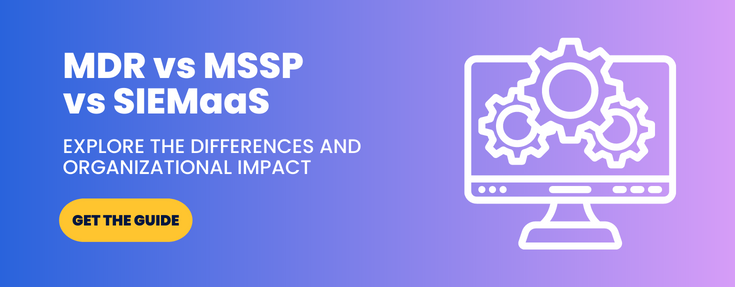What Should I Have in my SIEM System?

 By
Jason Miller
·
3 minute read
By
Jason Miller
·
3 minute read
What Should You Look For In a High-Quality SIEM System?
SIEM, or Security Information and Event Management solutions are a comprehensive collection of rules and technologies that offer a comprehensive overview of your IT infrastructure. This includes the entirety of an organization’s security scope, workflow, log management, and compliance. From growing small businesses to enterprise-level organizations, our reliance on a wider variety of IT systems is growing, and our security scope grows with it.

The first thing to do when assessing what you need your SIEM to provide is to get an assessment of your current system. This will give you a baseline on which to build the perfect cybersecurity solution for your organization.
The following is a basic list of things that every SIEM system should provide:
- Event and log collection
- Dashboards and views of your organization’s entire security scope
- Field mapping or normalizing data into more readable forms for IT security purposes
- Correlating data to offer context and create relationships related to rules, architecture and alerts
- Adapting your IT security processes to a wide range of formats, types, compliance requirements, and changes
- Reporting and alerting
- Log management, often to ensure event logs are stored in a central location to make it easier for IT security staff to find and manage
There are more advanced SIEM system solutions that also include:
- user and entity behavior analytics (effective at spotting abnormal use of authorized accounts, for instance)
- security orchestration and automated response (which helps you secure and react to potential risks much more quickly.)
The following list includes basic benefits that every SIEM solution should provide.
- They ensure better IT environment visibility. The log management capabilities offer much better visibility over your security scope through data aggregation. It can eliminate blind spots by making sure your team doesn’t have to check multiple different log sources and makes sure that malicious activities don’t remain concealed.
- It makes your security data much easier to read. Data from different sources and applications often look very different from each other. trying to find correlations between them or to make sense of them in the same context can take a tremendous amount of effort. When SIEM solutions collect and centralize data, they reformat that data into whichever form best suits your IT security team.
- They help you react quicker to potential threats. SIEM ensures that your IT security team has their finger on the pulse of different threat intelligence feeds so they can act immediately.
- You can begin implementing practices and technologies. The data provided by a SIEM allows your IT team to protect you from threats that have yet to happen.
- They can monitor abnormal activity. Activity in one part of your network might not seem strange but, across multiple parts of it, could be a sign of a security event. Stopping cyber-attacks in real time isn’t easy but being alerted to them in real time gives you a much better chance of managing it.
Choosing the right SIEM system solution for your organization
The range of benefits mentioned above cover only some of the benefits that SIEM solutions can offer your IT security team. Here are some questions to ask:
- Can it accommodate the number of systems, applications, and devices that fall under your security scope?
- Can it scale with both current systems and the projected growth or your scope?
- Is it compatible with your existing log systems?
- Do you have a need for forensic analysis capabilities?
- Do you have an additional need for advanced features like entity behavior analytics (UEBA) or security orchestration and automated response (SOAR)?
- Do you prefer to have your SIEM solutions on-premise on Cloud-based?
Addressing these questions can make it much easier to narrow down your SIEM options to those most relevant to your needs. Make sure your solutions provider matches your needs.
If your organization has a large security scope, including a range of devices, apps, SaaS solutions, and networks, or your scope is growing fast, then SIEM solutions is essential for helping your IT security team manage it all. You will be able to identify and react to security events much quicker, and even have the capability to protect better against newly identified threats that haven’t happened yet.
Our services aim to provide you with a simple no-nonsense solution to keep your business safe from online threats. If you’d like to learn more, don’t hesitate to get in touch with us today to speak to one of our friendly representatives.
We’ll help explain the services we offer and how they can be customized to your exact needs.
